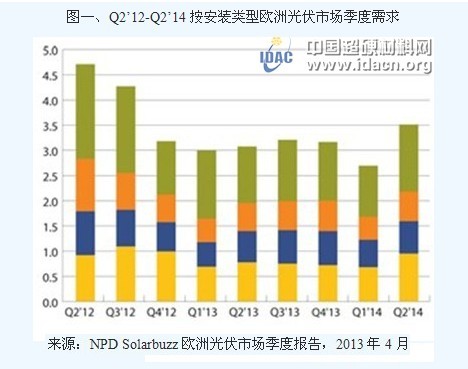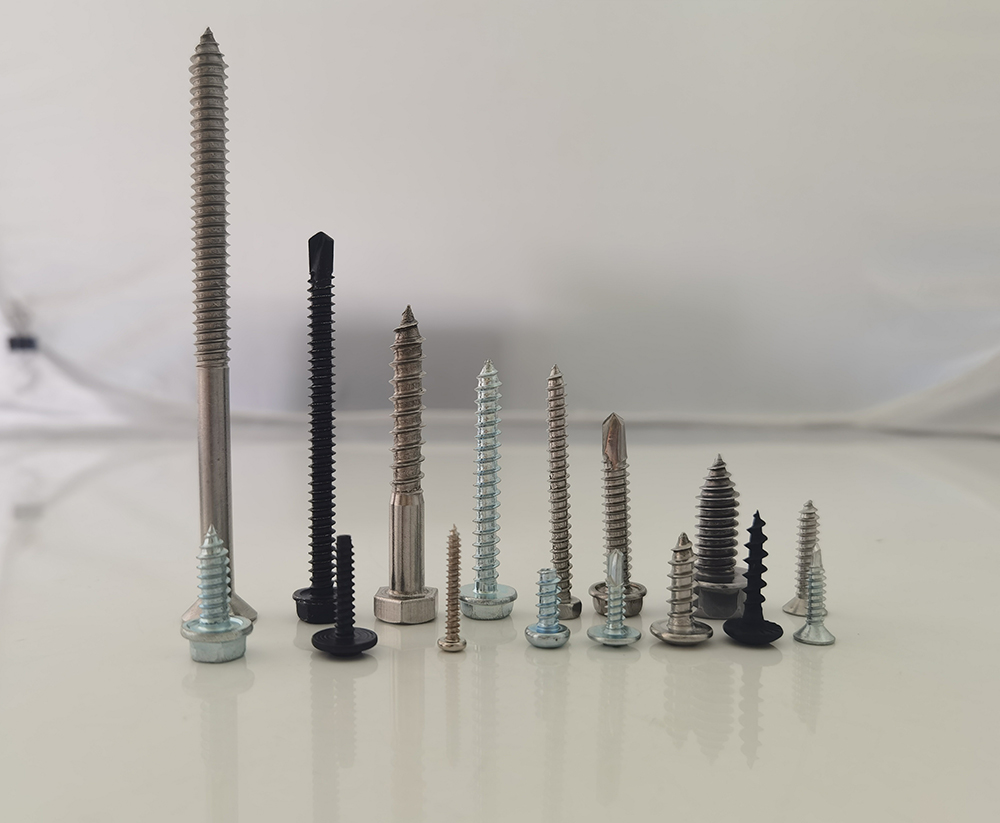Abstract According to the latest research from NPD Solarbuzz, the European PV market has experienced fluctuating demand over the years. Despite these ups and downs, the installed capacity in Europe is projected to reach 12.485 GW in 2013. As the global photovoltaic industry undergoes a major transformation, the European market faces several challenges that may impact its growth in the short term.
The transition period for the global PV sector has brought about increased competition, shifting policies, and evolving market dynamics. In Europe, trade tensions between the EU and China are expected to intensify during the second half of 2013, adding complexity to an already volatile environment. Beyond supply chain issues stemming from potential trade conflicts, there's growing uncertainty about how much demand will actually materialize this year, and which countries will drive the market forward.
Mid-Year Demand Trends in the European Market
In Q2 2013, four of the five largest European markets—Germany, Italy, France, and Greece—saw a decline in PV demand compared to the same period in 2012. The UK was the only exception, with demand expected to rise to 210 MW in the second quarter. France is also anticipated to follow a similar upward trend in Q3.
The global PV industry is undergoing a necessary integration phase, which has led to ongoing debates between centralized and distributed power generation models. This tension has created some obstacles during the transition.
Government incentives have traditionally been the main driver of European PV demand, as they encourage consumers to invest in solar systems by reducing electricity bills. However, short-term constraints such as falling feed-in tariffs and retroactive taxation are diminishing investor confidence and economic returns.
Although PV system prices continued to drop in 2012, the rate of decline has slowed in 2013, indicating a possible stabilization. While the Sino-European trade dispute could affect component pricing, it is unlikely to significantly alter overall installation costs. Financing, especially through banks, remains a key challenge for the European market.
New grid connection barriers, including additional access fees and policy changes due to economic instability, are further complicating the landscape. Countries like Belgium and Greece are preparing to implement their 2020 Renewable Energy Action Plan targets, which may dampen local PV development in the future.
Economic and Fiscal Uncertainty
The broader European economy continues to weaken, with the financial crisis still affecting many member states. Austerity measures are being implemented across the EU to meet deficit reduction targets, leading to cuts in public spending and higher taxes. While PV support is often funded through electricity tariffs rather than direct government subsidies, these policies are frequently targeted in budget-cutting efforts.
Recent or upcoming policy changes include:
- In Greece, residential PV installations may be subject to retroactive income tax, similar to what occurred last year.
- In Spain, stalled energy reforms could lead to income taxes on PV systems from 2010, while subsidy cuts have been implemented to reduce deficits.
- In Belgium, reduced PV subsidies in Wallonia could negatively impact the market, including retroactive grid connection fees.
- France has raised its annual PV installation target.
- Romania introduced a draft law to lower PV returns after July 2013.
Positive Factors Driving New Demand
During this transitional phase, the European market’s demand growth depends largely on the success of two business models: centralized and distributed generation. If non-traditional producers can generate revenue from solar, cost competitiveness will become the primary driver of the market.
Additional growth opportunities include:
- Energy storage in industrial and commercial PV systems.
- Residential energy storage remains a niche market, primarily driven by Germany.
- Other European countries are maintaining a secondary position, but emerging markets like Turkey show promise.
Turkey has developed a model where PV generators or consumers directly benefit, reducing the revenue of traditional power plants. While the Turkish market is still small, it presents both opportunities and challenges as demand grows and infrastructure upgrades are needed.
Figure 1 illustrates NPD Solarbuzz’s forecast for European PV demand in Q2 2013 and the surrounding quarters. The data shows a relatively flat distribution throughout the year, with minimal fluctuations in key segments like residential, commercial, and ground-mounted systems. The total European PV market is expected to reach 12.485 GW in 2013.

The Gradual Decline of European Dominance
As markets outside Europe—such as Japan, China, and the U.S.—gain more market share, the European PV market’s significance may shift in the next 12 to 18 months.
Despite this, the European market is still expected to maintain a relatively stable quarterly demand pattern until mid-2014, offering some level of predictability for suppliers and project developers. However, within the region, some countries will outperform others.
It remains to be seen how heavy import tariffs on Chinese components will affect end-market demand. At the project level, installation prices remain a key factor in determining investment returns, with component costs just one part of the equation.
The transition period for the global PV sector has brought about increased competition, shifting policies, and evolving market dynamics. In Europe, trade tensions between the EU and China are expected to intensify during the second half of 2013, adding complexity to an already volatile environment. Beyond supply chain issues stemming from potential trade conflicts, there's growing uncertainty about how much demand will actually materialize this year, and which countries will drive the market forward.
Mid-Year Demand Trends in the European Market
In Q2 2013, four of the five largest European markets—Germany, Italy, France, and Greece—saw a decline in PV demand compared to the same period in 2012. The UK was the only exception, with demand expected to rise to 210 MW in the second quarter. France is also anticipated to follow a similar upward trend in Q3.
The global PV industry is undergoing a necessary integration phase, which has led to ongoing debates between centralized and distributed power generation models. This tension has created some obstacles during the transition.
Government incentives have traditionally been the main driver of European PV demand, as they encourage consumers to invest in solar systems by reducing electricity bills. However, short-term constraints such as falling feed-in tariffs and retroactive taxation are diminishing investor confidence and economic returns.
Although PV system prices continued to drop in 2012, the rate of decline has slowed in 2013, indicating a possible stabilization. While the Sino-European trade dispute could affect component pricing, it is unlikely to significantly alter overall installation costs. Financing, especially through banks, remains a key challenge for the European market.
New grid connection barriers, including additional access fees and policy changes due to economic instability, are further complicating the landscape. Countries like Belgium and Greece are preparing to implement their 2020 Renewable Energy Action Plan targets, which may dampen local PV development in the future.
Economic and Fiscal Uncertainty
The broader European economy continues to weaken, with the financial crisis still affecting many member states. Austerity measures are being implemented across the EU to meet deficit reduction targets, leading to cuts in public spending and higher taxes. While PV support is often funded through electricity tariffs rather than direct government subsidies, these policies are frequently targeted in budget-cutting efforts.
Recent or upcoming policy changes include:
- In Greece, residential PV installations may be subject to retroactive income tax, similar to what occurred last year.
- In Spain, stalled energy reforms could lead to income taxes on PV systems from 2010, while subsidy cuts have been implemented to reduce deficits.
- In Belgium, reduced PV subsidies in Wallonia could negatively impact the market, including retroactive grid connection fees.
- France has raised its annual PV installation target.
- Romania introduced a draft law to lower PV returns after July 2013.
Positive Factors Driving New Demand
During this transitional phase, the European market’s demand growth depends largely on the success of two business models: centralized and distributed generation. If non-traditional producers can generate revenue from solar, cost competitiveness will become the primary driver of the market.
Additional growth opportunities include:
- Energy storage in industrial and commercial PV systems.
- Residential energy storage remains a niche market, primarily driven by Germany.
- Other European countries are maintaining a secondary position, but emerging markets like Turkey show promise.
Turkey has developed a model where PV generators or consumers directly benefit, reducing the revenue of traditional power plants. While the Turkish market is still small, it presents both opportunities and challenges as demand grows and infrastructure upgrades are needed.
Figure 1 illustrates NPD Solarbuzz’s forecast for European PV demand in Q2 2013 and the surrounding quarters. The data shows a relatively flat distribution throughout the year, with minimal fluctuations in key segments like residential, commercial, and ground-mounted systems. The total European PV market is expected to reach 12.485 GW in 2013.

The Gradual Decline of European Dominance
As markets outside Europe—such as Japan, China, and the U.S.—gain more market share, the European PV market’s significance may shift in the next 12 to 18 months.
Despite this, the European market is still expected to maintain a relatively stable quarterly demand pattern until mid-2014, offering some level of predictability for suppliers and project developers. However, within the region, some countries will outperform others.
It remains to be seen how heavy import tariffs on Chinese components will affect end-market demand. At the project level, installation prices remain a key factor in determining investment returns, with component costs just one part of the equation.
A Stud is a type of fastener that has no head, but only external threads on both ends. When connecting, one end of it must be screwed into the part with internal threaded hole, the other end through the part with a through hole, and then screwed on the nut, even if the two parts are fastened into a whole. This type of connection is called a stud connection and is also a removable connection. It is mainly used in cases where one of the connected parts has a large thickness, requires a compact structure, or is not suitable for bolting because of frequent disassembly.

Timberlok Screws,Pan Head Wood Screws ,Metric Set Screws,Hex Head Set Screw
Kunshan Zhonggu Precision Hardware Co., Ltd. , https://www.zgfastener.com